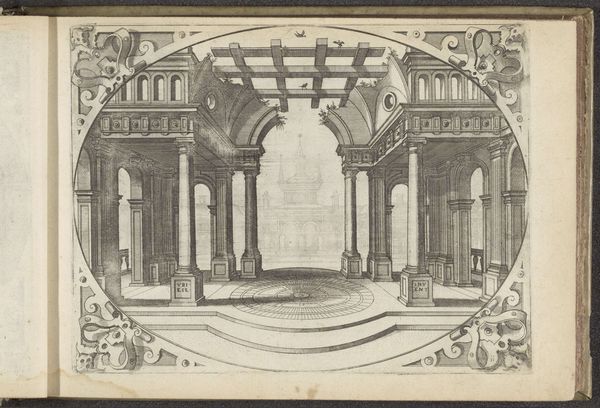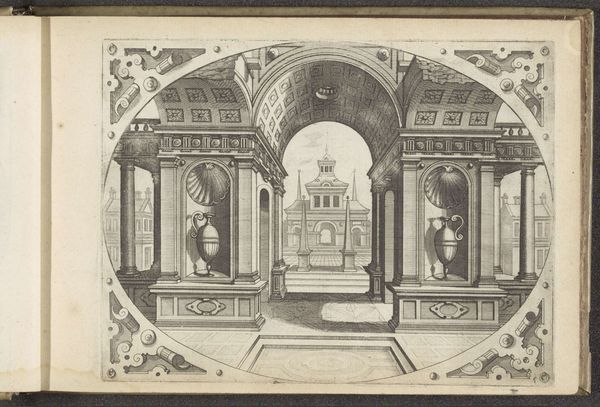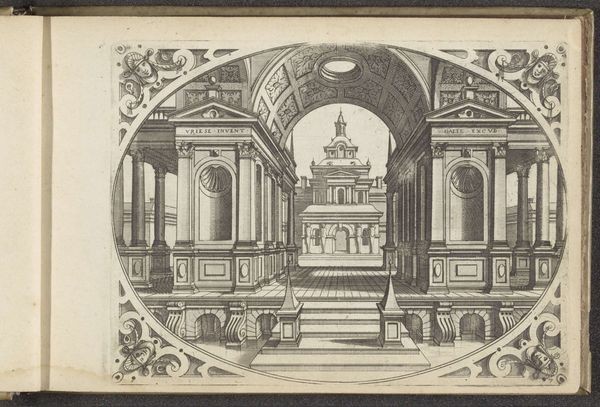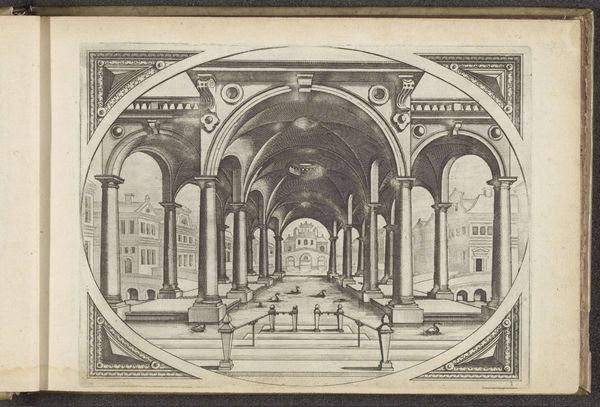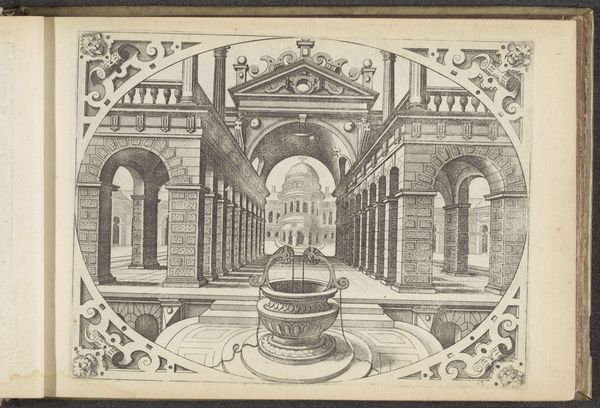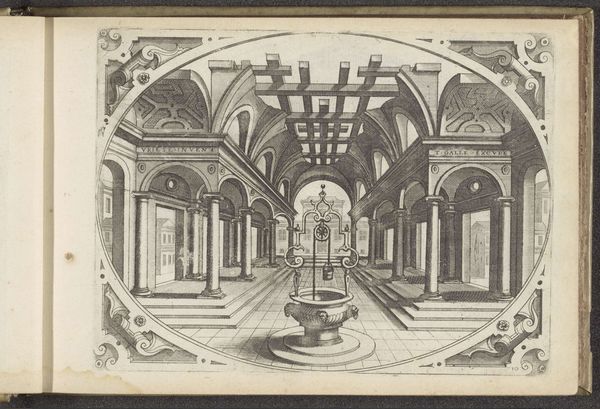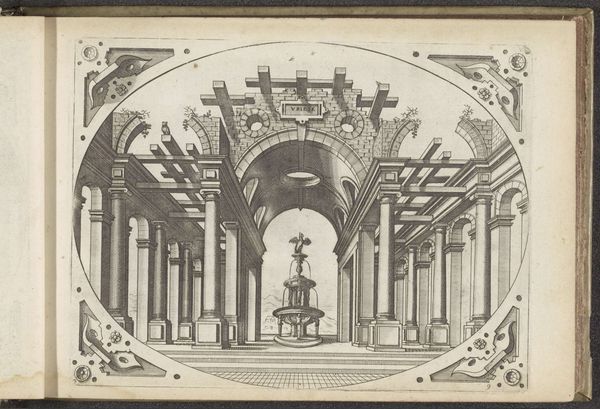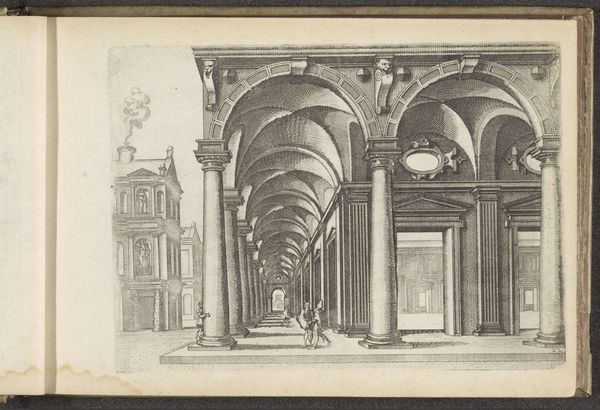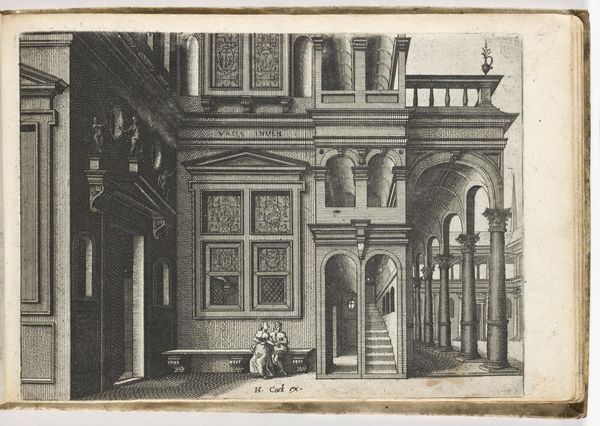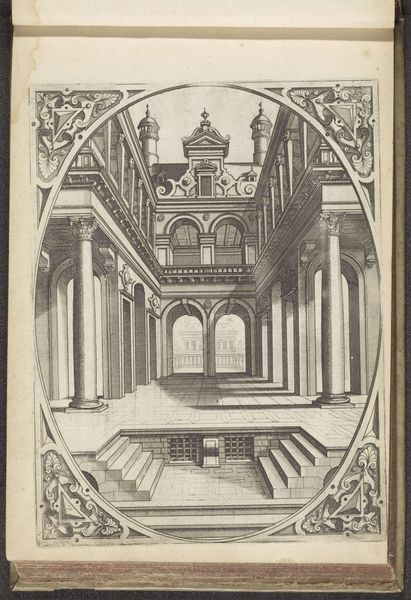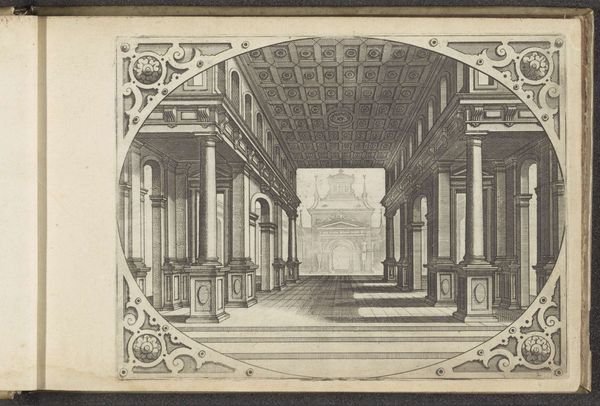
Poortgebouw met tunnelgewelf en gezicht op een stadspoort 1560 - 1601
0:00
0:00
drawing, print, intaglio, pen, engraving, architecture
#
drawing
# print
#
intaglio
#
perspective
#
form
#
11_renaissance
#
pen-ink sketch
#
line
#
pen
#
cityscape
#
italian-renaissance
#
engraving
#
architecture
Dimensions: height 162 mm, width 215 mm
Copyright: Rijks Museum: Open Domain
Editor: This drawing, titled "Poortgebouw met tunnelgewelf en gezicht op een stadspoort," or "Gateway with tunnel vault and a view of a city gate", by Johannes or Lucas van Doetechum, created sometime between 1560 and 1601, employs pen, ink, and engraving. I'm immediately struck by its linear precision and the depth achieved through perspective. What do you see in this piece, especially regarding its form and structure? Curator: The most compelling element, for me, resides in the meticulously rendered linear quality and deployment of perspective, which prefigures 20th-century experiments in geometric abstraction. Note how the intaglio technique, the engraving, lends itself to a stark contrast, heightening the interplay of light and shadow, a dichotomy fundamental to its structure. Does the regularity of its forms suggest anything to you? Editor: It seems to highlight an ideal of order and proportion. The repetition of the arches and columns creates a strong sense of rhythm. Is that rhythm integral to the overall aesthetic effect? Curator: Precisely. This carefully calibrated rhythm operates as a structural backbone. Look closer at how the lines delineate space; there’s a tension between the two-dimensional surface and the illusion of three-dimensionality. That tension underscores the artwork's exploration of form itself, making the representation secondary. It seems like a constructed world viewed through geometrical precision. Editor: I see what you mean. I was initially focused on the perspective creating depth, but the lines and forms create something almost abstract. I never considered that the rhythm could be such an important structuring device. Curator: Exactly! Understanding how lines function independently of representation is crucial. In this case, the lines aren't merely descriptive, but constructive, producing their own inherent beauty through pattern and proportion. Editor: Thank you! I now see how the abstract qualities of line and form elevate the engraving beyond a mere depiction of architecture. Curator: My pleasure! Recognizing these structural principles opens new avenues for understanding art across periods and styles.
Comments
No comments
Be the first to comment and join the conversation on the ultimate creative platform.
